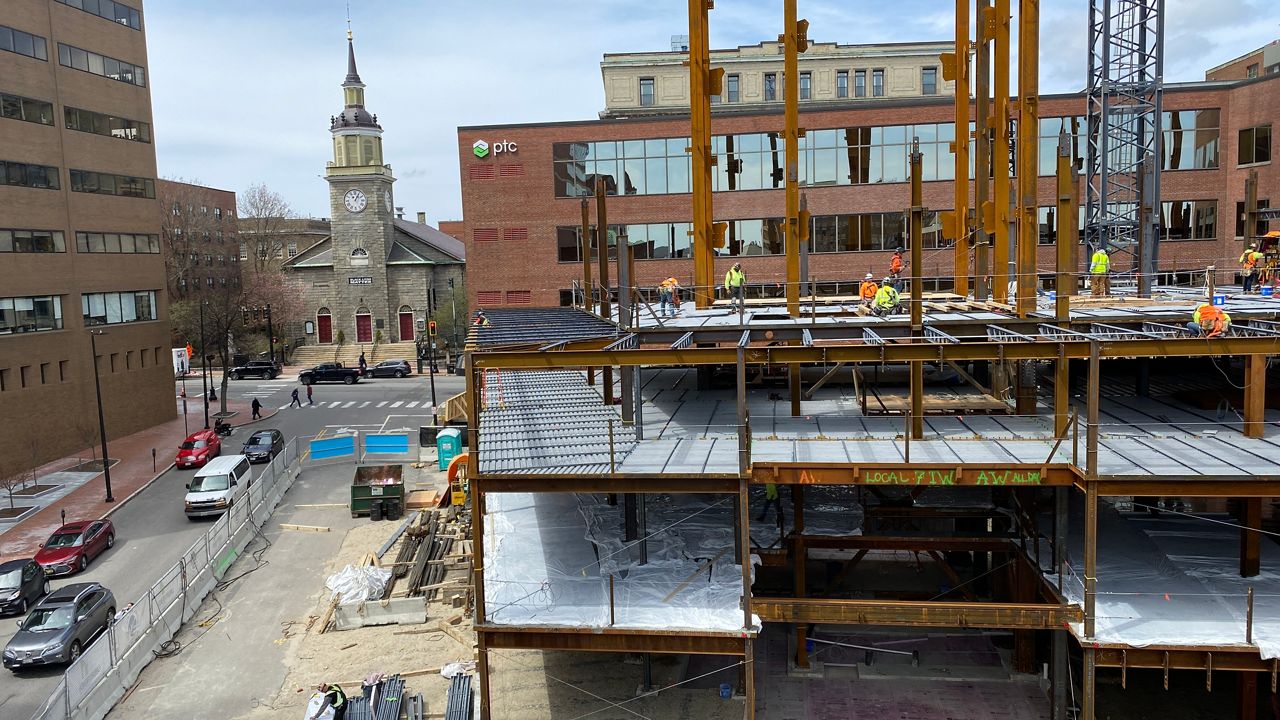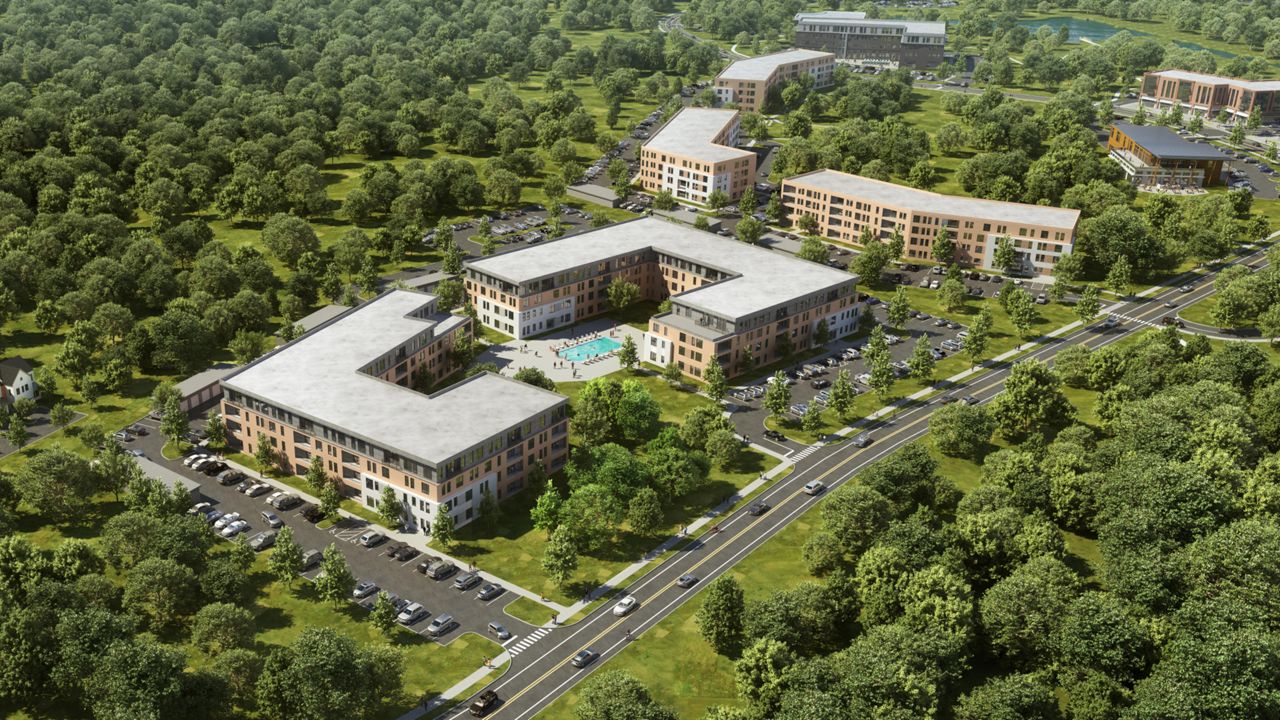Jack Soley is a longtime developer of residential housing in Portland. His properties include condos and apartments all over the city, too many for him to remember. Even an estimate on the number of housing units he has built, he said, is impossible.
"Let's just say I've builkt a lot of units," he said.
But an ordinance forcing developers to provide more workforce housing may push those like Soley, who may be in the best position to build that housing, out of Portland.
“I’m just looking outside the city of Portland, where it is still tenable to build,” Soley said.
It’s been two years since changes were made to the ordinance following a citizens’ initiative.
The city’s inclusionary zoning clause was created in 2015 to require developers to provide more “workforce housing,” defined by Portland as rental units priced lower than market rates to allow for people making less than the average median income.
According to the city’s website, that threshold is just under $71,000 for a single-income household and just under $81,000 for a two-income household.
At the time, the ordinance applied to anyone building or renovating property with 10 rental units or more. Those builders had to make 10% of their property’s units available to anyone making up to 100% of the average median income.
But the clause changed in December of 2020, the result of a citizen’s initiative passed in November of that year. The clause now reads that developers have to earmark 25% of their rental units for people making no more than 80% of area median income.
The changes were part of Portland’s Green New Deal, a local citizens’ initiative created by People First Portland, a local committee in turn created by the Maine Democratic Socialists of America. Neither group responded to requests for comment from Spectrum News.
Earlier this year, developers and affordable housing advocates warned those changes would drive out all market-rate developers.
The ordinance changes haven’t stopped market-rate development in the past two years, according to Deputy Planning Director Kevin Kraft.
The planning board approved 12 new residential projects totaling 302 rental units. Of those, Kraft said, only five projects were large enough to trigger requirements in the clause. The rest, he said, were projects that had fewer than 10 rental units, and thus dodged the new rule.
“It certainly showed that there was definitely kind of a slowdown and a reconsideration of what are the impacts of the Green New Deal in terms of lenders and seeing how that penciled out for developers,” he said.
In April, developers and leaders in the housing community told Spectrum News that the new workforce housing requirement would make it difficult to produce any larger market-rate housing projects going forward.
“What we’re hearing from developers is that projects don’t work on that level,” Gary Vogel, past president and current board member of the Maine Real Estate Developers Association, said at the time.
This week, Vogel said he is still seeing developers moving out of Portland, opting instead to build in neighboring communities such as Westbrook and Biddeford. That includes, according to Vogel, Tom Watson, owner of Port Properties, which is working on a number of projects that were approved before the change, and is now working on at least one project building housing in Biddeford.
“I know of a lot of developers who have projects that just don’t work with those numbers,” he said, referencing the changes in Portland’s ordinance.
Meanwhile, Westbrook has seen an influx of developers, including individuals like Soley and companies like Port Properties, that had previously been better known for building in Portland, according to Westbrook Economic Development Director Daniel Stevenson.
Westbrook’s median income is $35,800 for a single income household and $71,000 for a family, based on 2020 data from the U.S. Census. Portland has a similar median single income and a median household income of over $61,000 in Portland.
Stevenson said the average monthly rent for a two-bedroom apartment in his city could be as high as $1,600. Official figures from Portland weren’t available, but the apartment comparison website rentdata.org listed the “fair market rent” price in Portland at about the same amount. The apartment-hunting website apartments.com, however, lists the average rent for a two-bedroom apartment in Portland at $1,681.
While Stevenson has not asked the developers outright if Portland’s workforce housing rule drove them into Westbrook, he said there have been about a dozen builders expressing interest in new projects in his city over the past two years since Portland changed its ordinance.
“I’m seeing more Portland developers coming through my door to do deals in Westbrook,” he said.
Soley said the requirement ensures market-rate developers will not be able to afford to build in Portland. They rely on investors and bankers who won’t make enough money on projects with a quarter of the units going for well below market rates. Affordable housing producers, Soley said, at least have government subsidies that market-rate builders can’t get.
“The new requirement is so onerous that a developer can’t build without subsidies,” he said. “In other words, it’s an impossible mandate.”
Westbrook has seen hundreds of new rental units, both market-rate and subsidized low-income affordable housing, in recent years.
According to Stevenson, new projects or projects in progress over the past two years alone will create an estimated 1,500 new housing units, with approximately a third of those labeled as subsidized affordable housing.
He attributed the boom to Westbrook relaxing some of its own regulations, such as those restricting density.
“What we did was more of a carrot than the stick approach,” he said.
Stevenson added, however, that other economic factors exist, such as construction costs, making it hard to know just what impact the change to Portland’s rules has had.
Vogel agreed, noting many factors have emerged since Portland’s inclusionary zoning clause went on the books in 2015.
“The economics were very good,” he said. “Interest rates were very low, construction costs — this was pre-pandemic — hadn’t gone through the roof like they have post-pandemic,” he said.
Kraft said it’s possible the past two years since the changes to the requirements have been an “adjustment period,” and don’t necessarily reflect a permanent change in developers’ interest in the city. The same data at the end of 2023 might say more about whether the dire predictions of an exodus of market-rate development are really coming true, he said.
“We’re still seeing residential projects come in, so I don’t see this drying up, the interest in Portland by any means, and there’s definitely not an indication of that, in terms of the amount of inquiries we’re still getting, but the scale of the projects may change certainly,” he said.
This story was updated on Dec. 15 to clarify Soley's work in residential housing.







